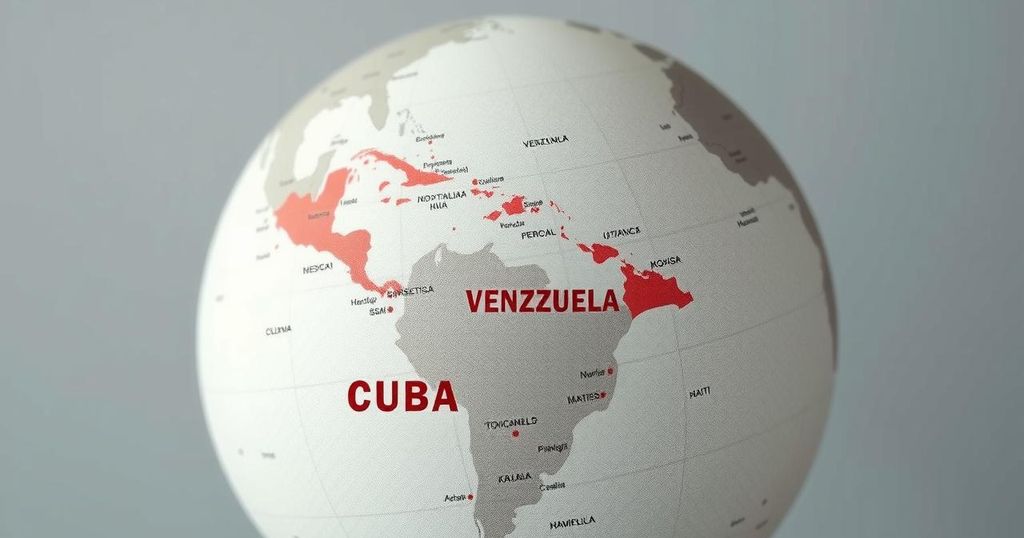Insurers Confront Rising Costs from Climate Change and Natural Disasters
The insurance industry is grappling with a growing crisis due to climate change and increasing natural disasters. Many firms are pulling coverage from high-risk areas, but governments will likely require insurers to absorb more costs. Various countries are testing solutions for managing these risks, yet the sustainability of these approaches remains uncertain as the financial impacts escalate.
Insurers are facing significant challenges as climate change leads to more frequent and severe natural disasters. In response, they are increasingly withdrawing coverage from regions at high risk of wildfires, floods, droughts, and hurricanes. However, this strategy may prove ineffective, as governments are unlikely to accept the establishment of permanent insurance dead zones, given their own limited financial capacity. Consequently, companies such as AIG, AXA, and Chubb will find themselves responsible for a large portion of these costs.
In recent years, every continent has experienced extreme weather events. The California wildfires in January have reportedly caused up to $150 billion in damages, while the bushfires in Australia and Cyclone Idai in 2019 inflicted severe losses in the Southern Hemisphere. Germany also experienced catastrophic flooding in 2021, leading to $40 billion in damages, marking it as the most costly natural disaster in the country’s history.
The economic repercussions of natural disasters are escalating. In 2024, losses from such events reached $368 billion, exceeding the inflation-adjusted annual average since 2000 by 14%. Aon attributes much of this financial burden to climate-related disasters like storms and flooding, which could worsen if damage estimates from the recent Los Angeles wildfires are confirmed.
Given the staggering costs, insurers have had to manage their liabilities. Insured losses, representing the damage covered by policies, comprise approximately 40% of total disaster-related economic costs. Yet, the remaining 60% reveals significant exposure, particularly given that public insurance schemes often contribute to this figure, inflating the percentage of covered losses.
To mitigate risks, private insurers are pulling back from high-risk areas. Major firms like State Farm and Allstate have reduced their coverage in California, thereby avoiding some of the financial fallout from January’s wildfires. Notably, in Louisiana, approximately 20 insurance companies have exited the state’s market within the last two years, reflecting a broader trend of withdrawal from more perilous coverage.
The consumer perspective is notably adverse during this period of insurer retrenchment. Estimates from the World Economic Forum suggest that climate change impacts could approach $3 trillion by 2050, a financial burden that governments are ill-prepared to shoulder without politically contentious tax increases. The sustainability of allowing insurance dead zones to persist is also in question, leaving many residents vulnerable.
Countries are exploring various solutions to address this insurance crisis. The UK has initiated Flood Re, a collaboration between insurers and the government to provide flood-prone homes with coverage. However, the initiative currently covers only a small percentage of vulnerable homes and its future viability is uncertain if damage costs continue to rise.
Switzerland employs a more robust model wherein 12 private insurers pool risks in high-hazard areas, covering 90% of the natural disasters market. Premiums are based on property values rather than risk levels, distributing costs more fairly among low and high-risk homeowners. However, this system’s applicability in less affluent nations remains uncertain, particularly in scenarios of suddenly increased losses.
The recent wildfires in the U.S. serve as a cautionary tale about the limitations of well-intentioned insurance schemes. Various states have implemented FAIR plans to share risk in vulnerable areas, yet the California FAIR plan struggled financially after the wildfires, necessitating a $1 billion bailout. The legal framework allows insurers to pass on some costs to consumers but compels them to absorb half the expenses themselves.
This situation illustrates that, when calamity strikes, public schemes often depend on private insurers for funding. Despite the insurance sector’s return on equity being modest, policymakers will still look to these firms for financial support during crises. As a solution, it may be prudent for governments to enforce stricter building codes to enhance disaster resilience, thus reducing future liabilities. However, achieving this vision will take time, and, in the interim, insurers will likely be pressed to cover increasing losses.
Insurers are increasingly strained by the financial impacts of climate change, leading to strategic withdrawals from high-risk markets. Despite significant insured losses, a substantial portion of disaster costs remains uncovered. Various countries are adopting different methods to address this insurance gap, yet challenges remain, particularly in ensuring sustainable coverage for vulnerable populations. Ultimately, to mitigate these ongoing risks, governments may need to take tougher measures in regulating construction and improving disaster preparedness.
Original Source: www.tradingview.com




Post Comment